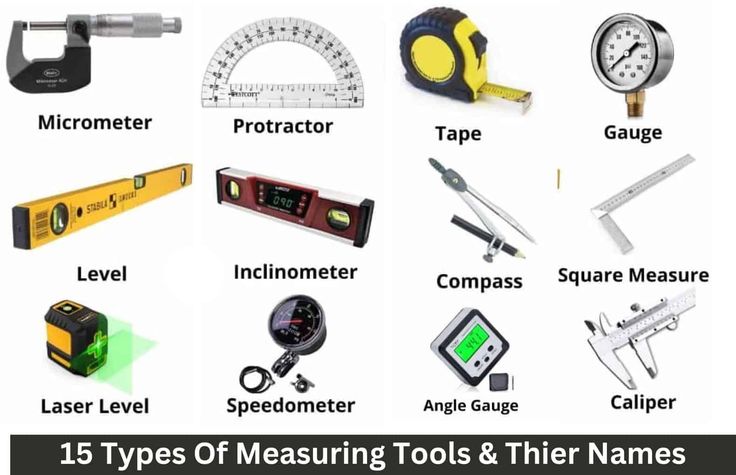The notion of measurement extends beyond mere numerical quantification; it serves as a prism through which the intricacies of the universe can be comprehended. Measuring tools, much like a seasoned guide navigating a dense forest, facilitate not only the elucidation of quantitative aspects but also the nuanced understanding of qualitative phenomena. This discourse seeks to unravel the multifaceted roles that measuring instruments play, challenging the simplistic view of them as mere conduits for numerical data.
At the core of scientific inquiry lies the concept of precision. Measuring tools are inherently designed to translate physical phenomena—length, mass, time—into universally comprehensible figures. Yet, to confine these instruments solely to their measuring function reduces their conceptual richness. Consider the ruler, not merely as a straightedge for gauging lengths, but as a facilitator of design and creativity. Each graduated mark serves both a practical purpose and a symbolic reminder of structure in our chaotic world. Thus, measuring tools possess an inherent duality: they quantify while simultaneously guiding us in the art of creation.
The versatile applications of these tools extend into realms that may seem disparate at first glance. In the field of architecture, a laser level does more than ascertain horizontal precision; it embodies the marriage of aesthetics and structural integrity. The act of measurement thus transforms into a dialogue between science and art, where analytical accuracy meets the ethereal quality of beauty. Just as an artist selects hues to evoke emotion, architects utilize their measuring tools to ensure that every line and angle serves a purpose in the grand narrative of the edifice.
Furthermore, the pedagogical implications of measurement tools cannot be understated. In educational settings, their use transcends the acquisition of technical skills. Instead, these instruments act as catalysts for critical thinking and problem-solving. Take, for instance, the micrometer screw gauge. While it serves the primary function of measuring small distances, its employment in a laboratory can inspire students to ponder the very nature of scale and the limits of human perception. Through engagement with measurement, learners embark on a journey that hones their analytical competencies—a quest for knowledge that propels them into the realm of scientific mastery.
In fields such as psychology and sociology, measuring tools likewise transcend the boundaries of numerical assessment. Surveys and questionnaires, often viewed merely as instruments for data collection, can facilitate profound insights into human behavior and societal trends. By quantifying subjective experiences, researchers uncover patterns that illuminate the complexity of human emotion and interaction. In this context, measurement becomes a vessel for understanding the human condition, a bridge linking the empirical and the anecdotal. Each response is not just a statistic but a contribution to the intricate mosaic of human experience.
The metaphor of measuring tools as lenses of perception resonates strongly within the framework of philosophy as well. The act of measurement can be paralleled with the philosophical quest for truth. Just as a microscope reveals the minutiae of biological structures, measuring instruments uncover the hidden order within the universe. By offering a tangible means to explore the abstract, these tools challenge us to confront the limits of our understanding. They coax us into reflection, prompting inquiries not only about the ‘what’ but also the ‘why’ and ‘how.’
Moreover, the role of measuring instruments in the contemporary digital age offers fertile ground for exploration. The integration of technology with traditional tools has birthed a paradigm shift in measurement. From digital calipers to advanced software for data analysis, the appeal of precision has evolved alongside the complexities of modern society. Here, measuring tools take on additional significance as they facilitate not merely measurement but also connectivity and collaboration across diverse fields. In an era where data is the new currency, the ability to measure effectively becomes synonymous with power.
Yet, this rapid technological advancement begs the question: does the proliferation of sophisticated measuring devices lead us to overlook the foundational principles of measurement? As we become increasingly reliant on automated tools, the critical essence of understanding—grasping the rationale behind the numbers—may diminish. Consequently, it is imperative to maintain a balance; we must not allow the conveniences of modernity to eclipse the intrinsic value of measurement as a conduit for deeper exploration and comprehension.
In summation, measuring tools serve as far more than instruments for obtaining objective figures; they inhabit a unique intersection of art, science, and philosophy. Their capabilities extend into realms of creativity, education, and social inquiry, revealing their pivotal role in shaping our understanding of the world. Each measurement taken can be envisaged as a brushstroke on the canvas of knowledge, a step in the infinite journey of inquiry that defines the human experience. Measuring tools encapsulate a profound duality, illuminating the unseen while asking us to contemplate the essence of existence itself. Thus, they are essential not just for measuring, but for understanding the intricate tapestry of the cosmos and our place within it.










